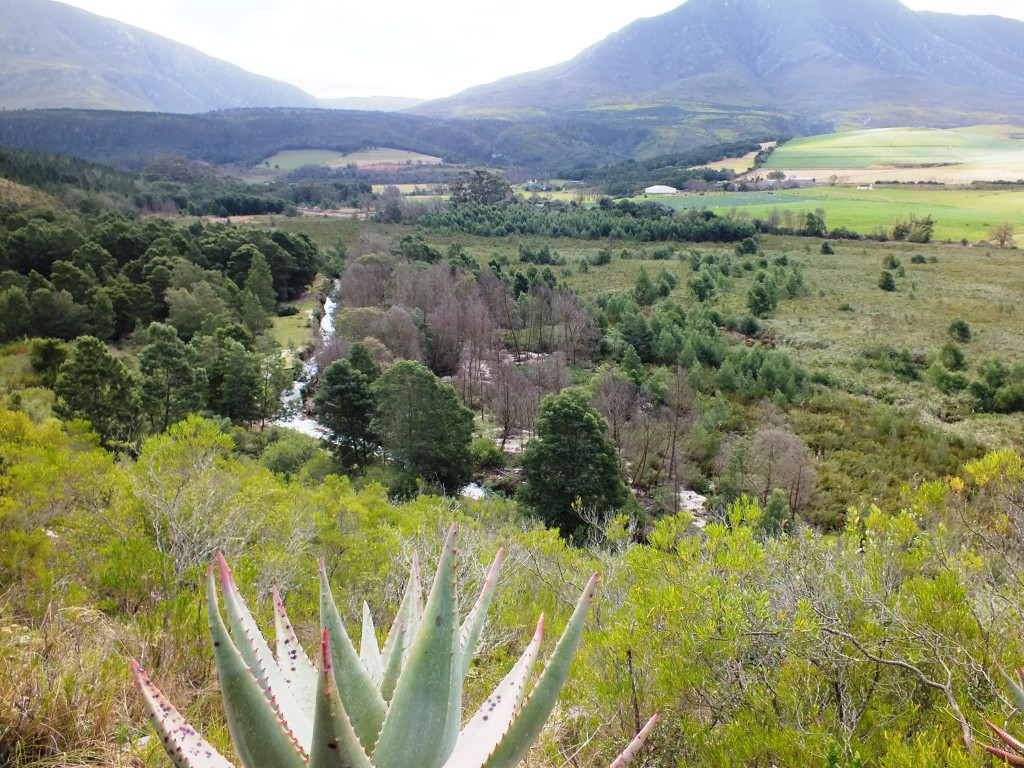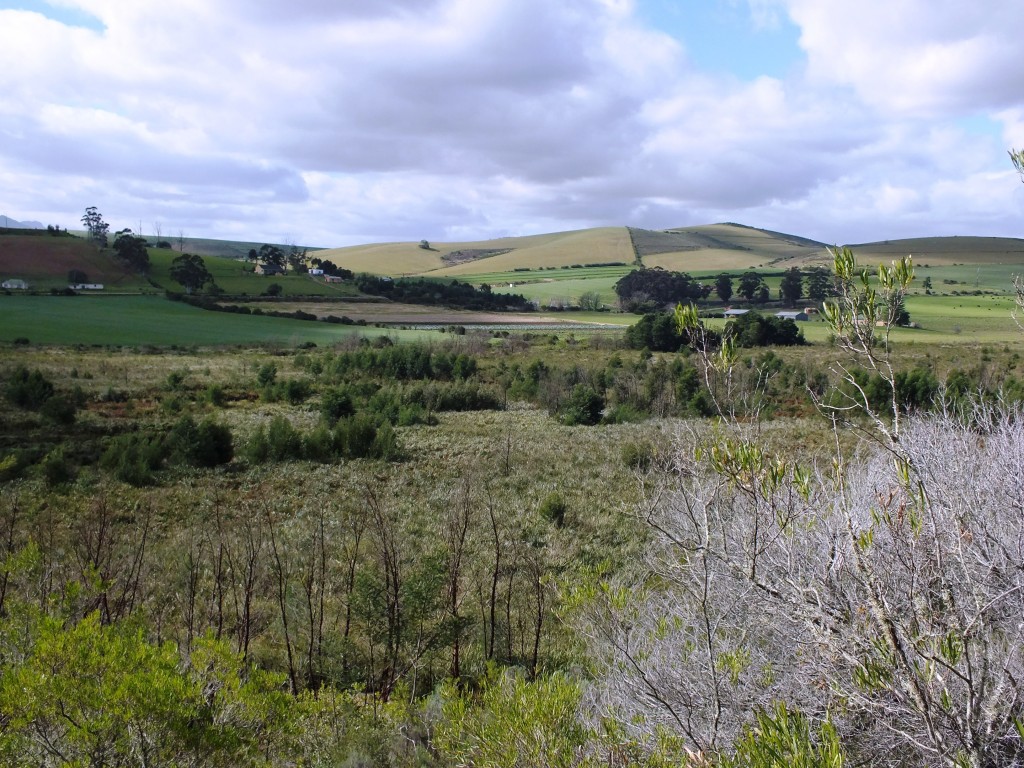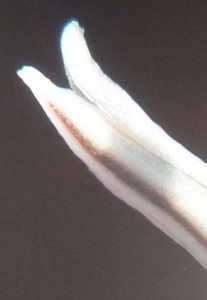It has long been my contention that there is no separation between Haworthia retusa and Haworthia turgida. It is one very variable system viz H. retusa, with a larger fairly non-proliferous plants tending to level areas and then smaller proliferous plants on steeper habitats. There is huge variability among members of any one population and of course much more between populations. Over and above this is the relationship of this apparently one single system, with H. mirabilis that is probably even more complex and varied. If one takes all the known populations and variants into consideration it become necessary to ask if H. retusa and H. mirabilis are also not just elements of one system , and one species. If all the considerations are summed and referral is made to vegetation and speciation drivers; what constitutes an area of endemism, then I am sure the answer will be “Yes”! What seems to have happened is a natural sequence. As sampling has progressed so has there been recognition of differences. The logical outcome is that sampling progression should lead to understanding and synthesis by reduction. Unfortunately there will be diehards that stay with the differences syndrome and cannot see the similarities.
There is surely no longer any doubt that Haworthia classification has been confounded. There are several factors. One is the historical one of sampling and naming. Sampling dates from the seventeenth century and description based on a few words and weak illustration. The second problem has been a nomenclatural system that revolves around the single types and assumes that departures from that still allow comfortable accommodation of all other departures (variants) under the primary name. The third problem is the absence of a species definition deriving from a lack of knowledge and hence understanding of what species are. The fourth problem is enthusiasts, writers, collectors, editors, reader etc. who generate and propagate within the confines of their own needs, limitations, knowledge and understanding. Too often they are not adequately informed to undertake something that really should be the task of professional botanists. Of course it is also true that professionals have not proved to be faultless either, as simply the lack of a species definition alone indicates.
From my personal point of view, I consider the sampling history and the nomenclatural constrictions of priority and automatic creation of type elements, among the main obstacles to a classification solution. Perhaps it is only secondary to the human factor where writers become anxious to establish their own opinions, based on who knows what, crowing from the top of a metaphorical farm dungheap. I have paid a lot of attention to an element that I name as H. retusa ‘nigra’. It is based on a very unrepresentative specimen from Kransriviermond where it seems as if it is a product of hybridization between H. retusa and H. mirabilis. But this situation, and the name, is inextricably involved in a series of populations grouped in areas like Van Reenens Crest (Swellendam), Klip River (W Heidelberg) and Kiewietsvlakte (W Riversdale). These populations do not seem to figure in any earlier exploration and if looked at objectively may now perhaps be seen as the mother lode from which H. retusa, H. mirabilis, H. pygmaea, H. mutica and even H. emelyae, as species, may emerge. The reality is that all these may not in fact even be discrete species.
In the forerunning article I discussed some new populations at Kruisrivier northeast of Riversdale and where they occur along the Kruis River. This river partially follows the interface of the Cape Sandstone Fold Mountains in an east/west direction and the situation is replicated to some measure elsewhere between Worcester and George. Most relevant is the similarity of the Kruis River valley and its south banks to the situation along the Klipriver west of Heidelberg. But it is not in the scope of this discussion to cover that now and I would in any case need to research the geology of both areas to do so. I will just present images to cover firstly the area, then to allow creation of a composite image of what the small sandstone H. retusa looks like, then images from just two populations of H. retusa to show how shadowy our image of this species is; and then I will show the images of plants from five points down a distance of about 4km along the south bank of the Kruis River to a point south and west of the better known Kruisrivier plants.
Setting the scene.
The Kruis River Valley is slightly east of north from Riversdale and the Kruis River is a headwater of the Goukou River that enters the sea at Stilbay. The views I have (figs. 1-4) are of a satellite image of the Valley from where the Kruis River exits the Langeberg Range to where it joins the Goukou. Three images are from the south bank looking northwest and northeast. The area is very heavily impacted by alien vegetation. The grazing animals are mainly cattle (beed and dairy) and hoof impact on the slopes is severe. The underlying shale along the south bank is not exposed and there is both boulder deposit, river alluvium and even some marine terrace in evidence. Nevertheless the area is not so dramatically varied geologically as is the area around Heidelberg to the west. Hence the transitions and interactions between species and their variants are both similar but very different. The initial conditions will be very different too.
The populations.
The first three sets are to briefly review H. retusa. The general perception of H. retusa is very restrictive and similarly the case with what was H. turgida. I consider them together. Nevertheless I have to sympathize with the splitter approach because I have to make a concession for the sake of discussion. Thus…
Set 1 MBB7895 H. retusa ‘caespitosa’, Diepkloof, Heidelberg (figs 5-9).
I explored the upper Kruis River in early 1970 and found the small sandstone version of what was then recognised as H. caespitosa. Later seen as H. turgida, it is known at many places from the Tradouw Pass, north of Heidelberg, Garcia Pass and Kok’s peak. Small and very proliferous, its leaves are also quite spinose on margins and keel and also flecked with reticulate and longitudinal translucence. The summer coloration tends to reds and yellows. I do not have images of this actual form but show five from a population south of Heidelberg that is very similar. But it should not be assumed that the transitional flow in the Heideberg area equates that at Kruis River. The variants down the length of the Klip and Duiwenhoks Rivers is another profound story.
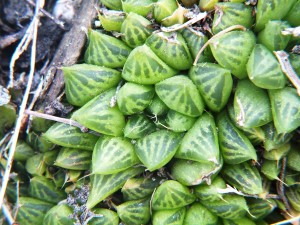 |
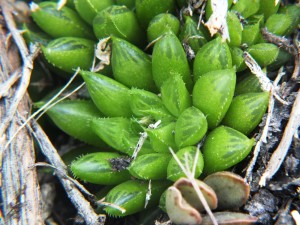 |
 |
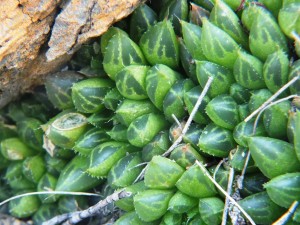 |
 |
|
Set 2 MBB7758 H. retusa, Skietbaan, S Riversdale (figs 10-19 ).
I show images of this species very recently taken. This is because I do not think that as a species H. retusa is properly appreciated for all its variants. It is this reality that we are confronted with when considering populations as at Komserante and now Kruisrivier where there is an evidence that it cannot any longer be seen as completely removed from H. mirabilis.
If images 10a and b appear to be different from the rest of this wet, they should. They are plants from the same locality but they were taken 4 years ago when most of the plants were very much larger. They illustrate a very useful point – the plants do NOT necessarily look the same all of the time.
 |
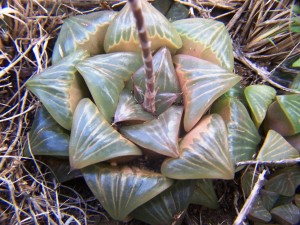 |
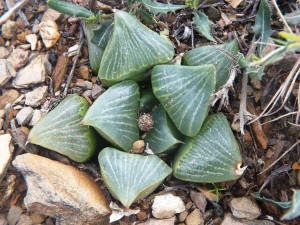 |
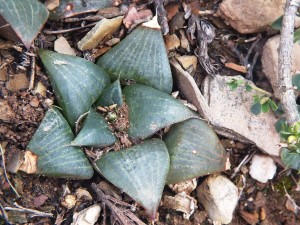 |
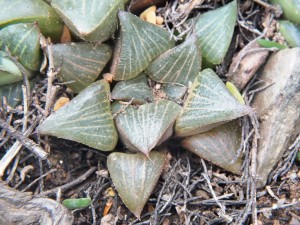 |
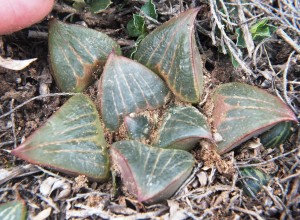 |
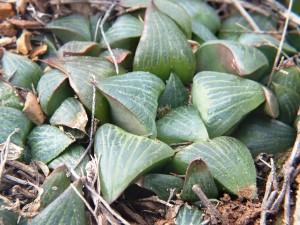 |
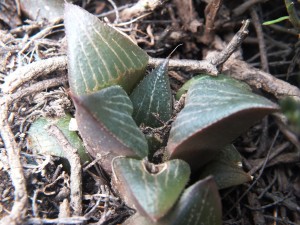 |
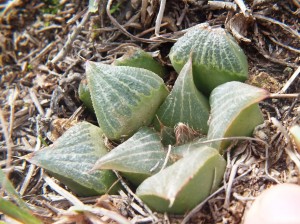 |
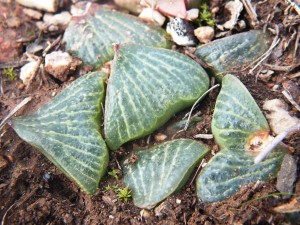 |
 |
|
Set 3 MBB8010 H. retusa, 8km S Riversdale (figs 20-28 ).
Primarily one should consider surface roughness and colouration as main separators from H. mirabilis. Flowering time is the prime differentiator and this is what is now to be seen in another light.
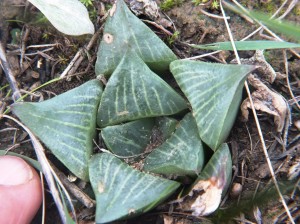 |
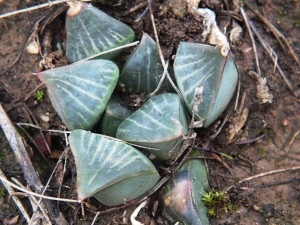 |
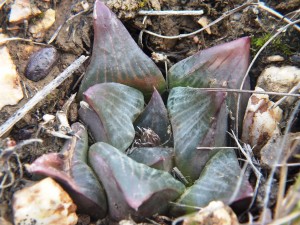 |
 |
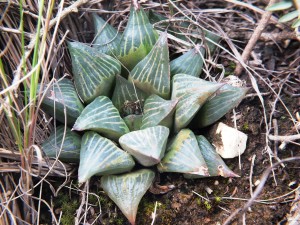 |
 |
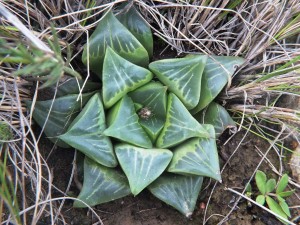 |
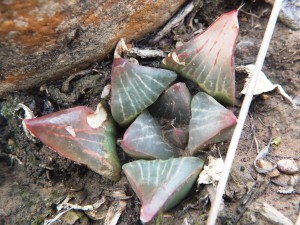 |
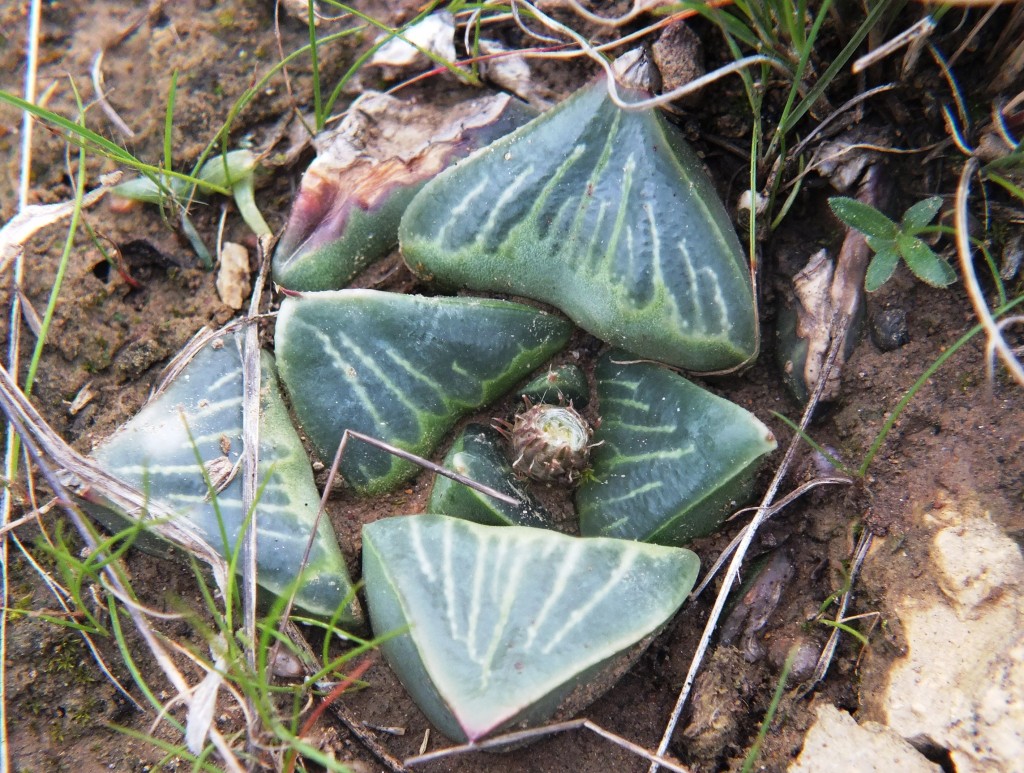 |
|
Set 4 MBB8004 H. retusa↔mirabilis, Bloekombos, Kruisriver (figs 29-42).
Reference can perhaps be made to the three sets illustrated in the preceding article. Here is will just re-capitulate to say that there is some doubt in respect of plant appearance and colouration, to examine the view that the represent H. retusa or H. mirabilis. (I dismiss totally and absolutely the notion that a third species needs to be fabricated to accommodate differences impossible to itemize or catalogue across the range of variants within and between populations.) I do not think that the similarity of surface roughness to that of the H. mirabilis ‘atrofuscoids’ should be overlooked – even some of the leaves show the tendency to roundness at the ends. This particular population was in full flower at the end of July.
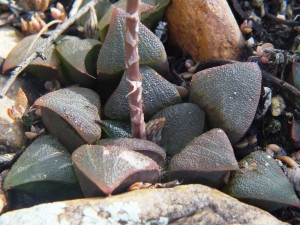 |
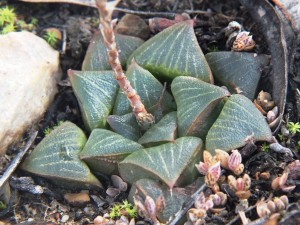 |
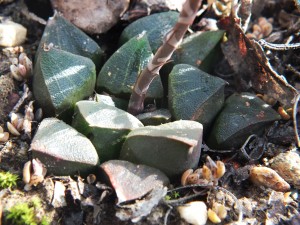 |
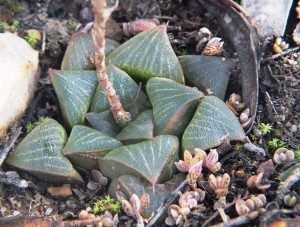 |
 |
 |
 |
 |
 |
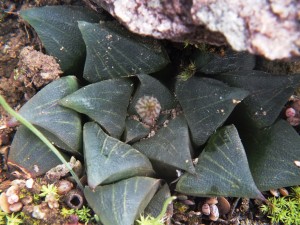 |
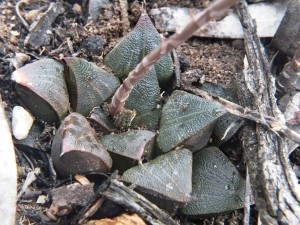 |
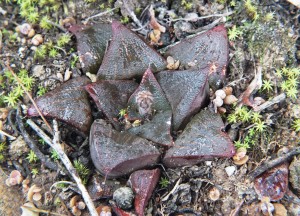 |
 |
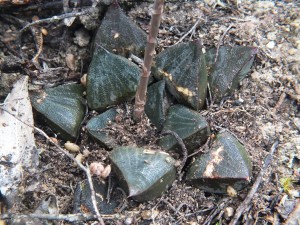 |
Subset 4 The flowers (figs 43-45). I do not see anything to distinguish these flowers from those photographed for the Wegwysersrivier population and given in the preceding article. It is difficult to imagine that the flowers may offer any distinctive features in the direction of difference that are not already offered by vegetative and geographic considerations. There may of course be direction towards similarity.
Set 4 H. retusa-mirabilis, MBB 8004 Bloekombos, Kruisriver – Subset 4a Flower profiles
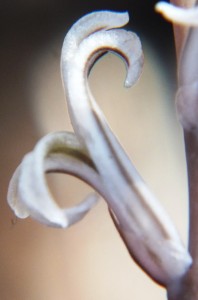 |
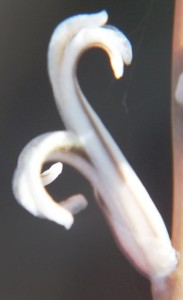 |
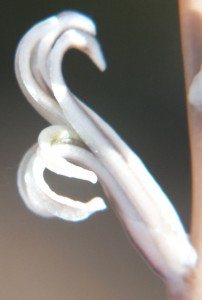 |
 |
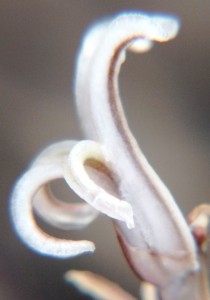 |
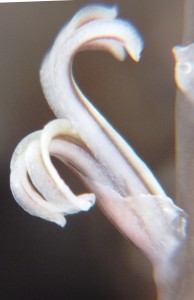 |
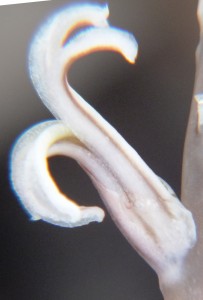 |
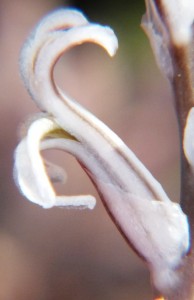 |
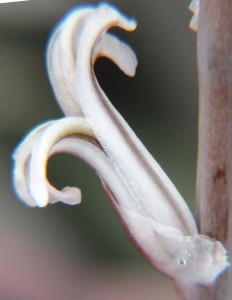 |
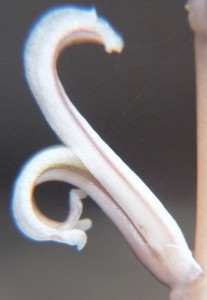 |
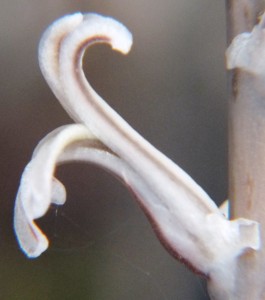 |
 |
Set 4 H. retusa-mirabilis, MBB8004 Bloekombos, Kruisriver – 45. Subset 4b Flower faces
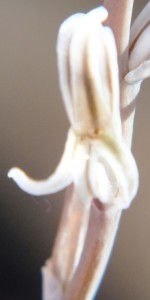 |
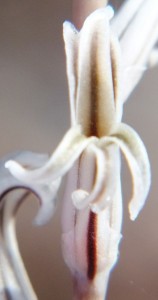 |
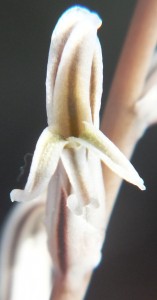 |
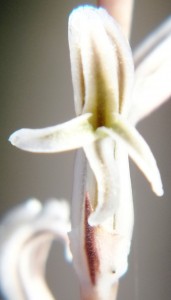 |
 |
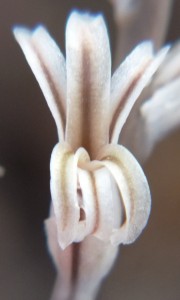 |
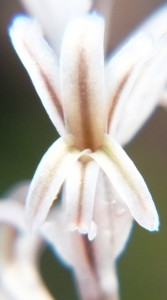 |
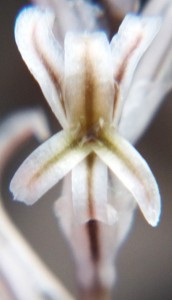 |
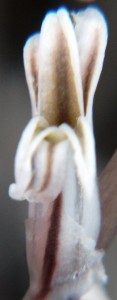 |
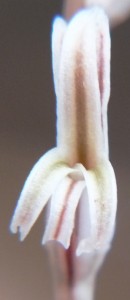 |
 |
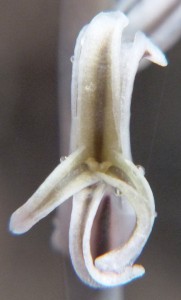 |
Set 4 H. retusa-mirabilis, MBB8004 Bloekombos, Kruisriver – 45. Subset 4c
Set 5 MBB8003 H. retusa↔mirabilis, W Bloekombos, Kruisriver (figs 46-73).
Curiously this population was only in early bud although only a few hundred meters away from the preceding. I do think there is significant difference in the appearances of the plants with more translucence of narrower leaves. However, plants from this and the preceding population could very easily be said to identify with those in any of the H. mirabilis populations southeast, south and west of Riversdale. It is also obvious that there is a degree of similarity to the rougher plants of H. retusa illustrated in sets 2 and 3, and also to the Komserante H. retusa↔mirabilis plants.
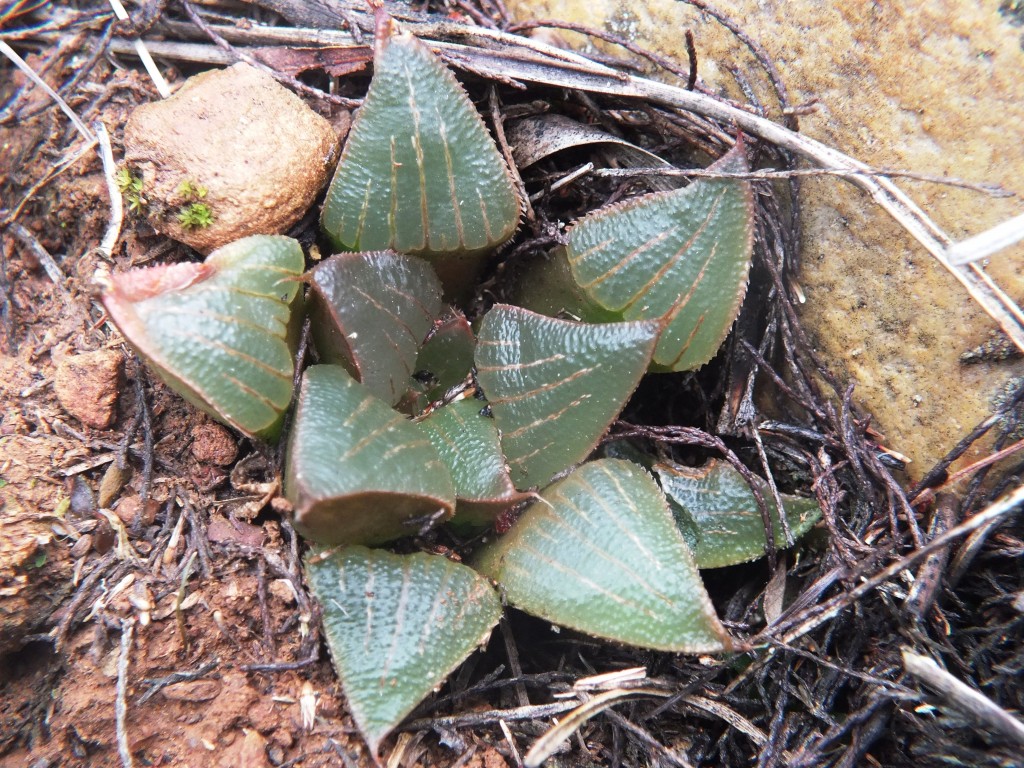 |
|
 |
 |
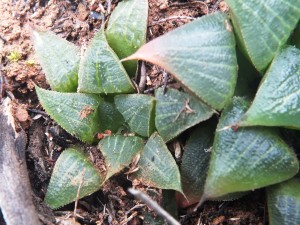 |
 |
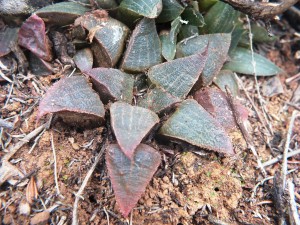 |
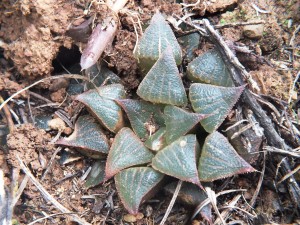 |
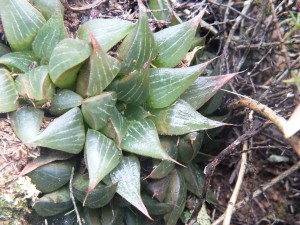 |
 |
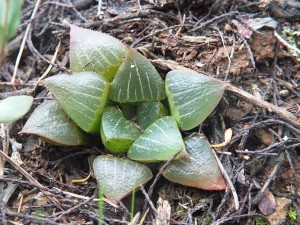 |
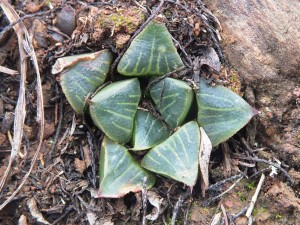 |
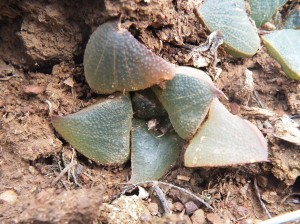 |
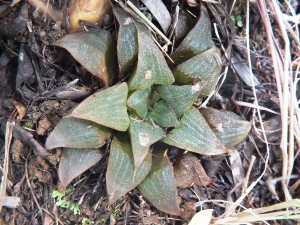 |
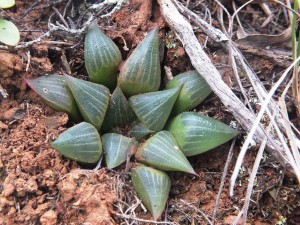 |
 |
 |
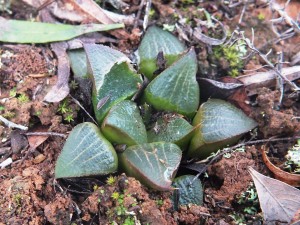 |
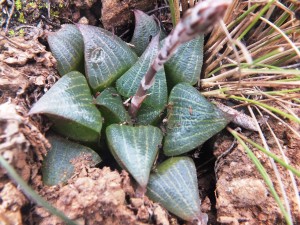 |
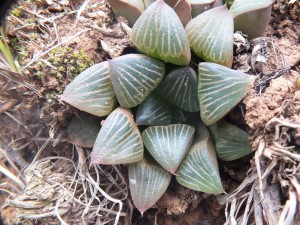 |
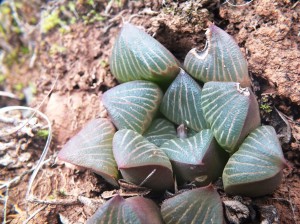 |
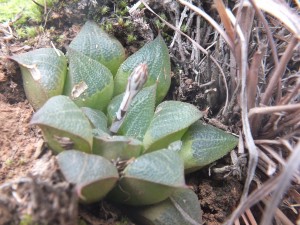 |
 |
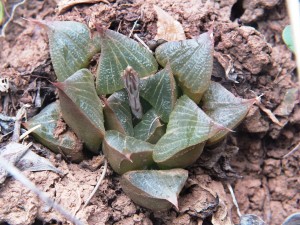 |
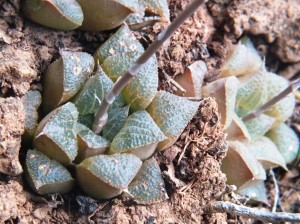 |
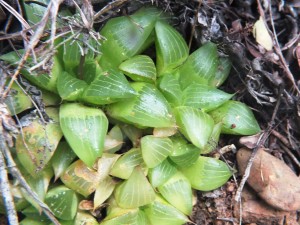 |
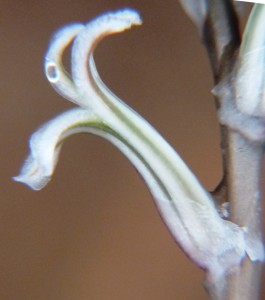 |
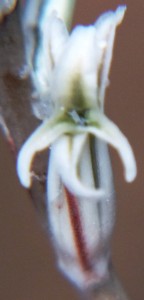 |
Set 6 MBB8007 H. retusa↔mirabilis, 600m W Bloekombos, Kruisriver (figs 74-81).
The banks west of set 5 are less steep and the terrain not clearly differentiated into discrete habitats. Heavy cattle trampling would severely impact on plants. Nevertheless we did find a small colony and are confident more would be found if more time was spent searching. The area is quite extensive and we did not consider several north/south valleys that could well harbor plants. The same is true for quite large hinterland to the Kruis River Valley and Etwin Aslander’s plants, similar to the ones we saw, are surely present back there. This small colony reflects further transition to H. retusa ‘turgida’. The leaves are smoother and more translucent. There are some floral differences muted by the small sample and by the fact that these features such as the absence of frilled base to the bract and the presence of a short pedicel, are variations observed within populations elsewhere.
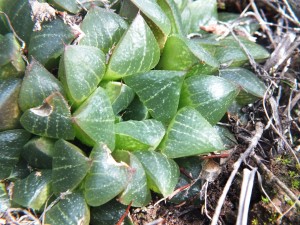 |
 |
 |
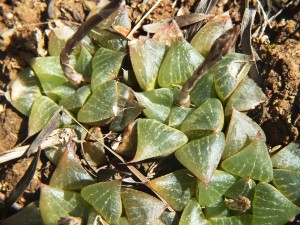 |
 |
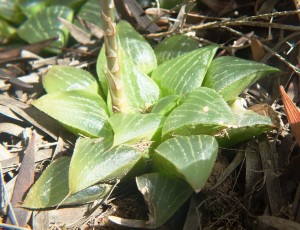 |
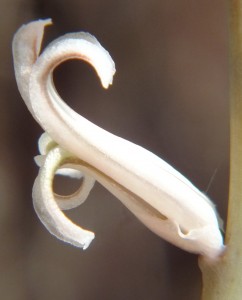 |
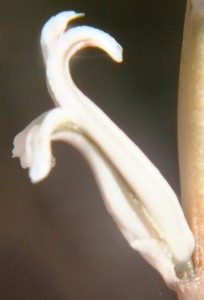 |
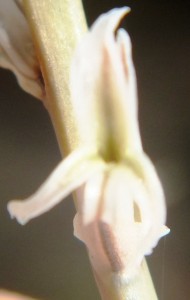 |
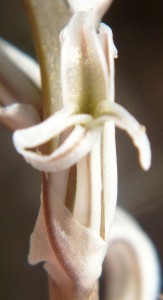 |
Set 7 MBB8008 H. retusa↔mirabilis, 1km W Bloekombos, Kruisriver (figs 82-83).
Also barely, registering as a population, these odd plants support the predicted presence of a direct transition from the Kruisriver mirabiloid-like H. retusa to the known sandstone forms of H. retusa ‘turgida’. Hoof action has severely impacted this area and it sems very probable that there was a larger population at some time or another. The slope militates against the solitary ground-level growth form of the more usual H. retusa but not steep or rocky enough to be home to the turgidoid cliff growing forms.
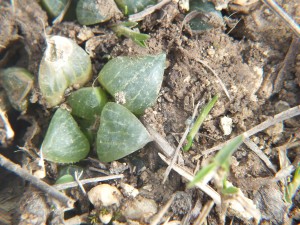 |
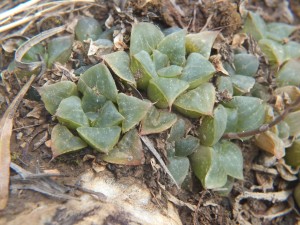 |
Set 8 MBB8005 H. retusa ‘turgida’, S Wegwysersrivier (figs 84-98).
The use of the equilibrium sign for the preceding is more informative than accurate. It reflects the problem of decision making where it is not clear if H. mirabilis is even in the area. This of course impacts on the situation further east when the reality of H. pygmaea and all its associated variants are brought into the picture. I am sure it is inarguable that we are now confronted with plants that are truly similar to H. retusa ‘turgida’. Curiously the flower is much the same as in MBB8003 and 8004 to the east but there is a difference in that the peduncles were softer and shorter than of plants to the east and suggesting the shorter lax habit of the cliff dwellers. The habitat is unlike the preceding in that the Tertiary deposit is more alluvial and the rock is more boulder-like. Trampling is still a severe problem. Note the two pictures of a H. retusaXfloribunda hybrid.
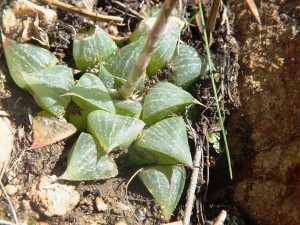 |
 |
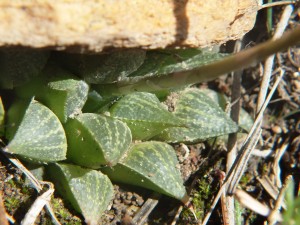 |
 |
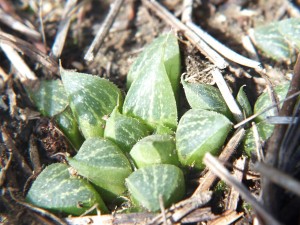 |
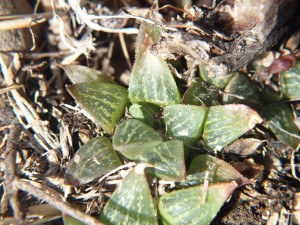 |
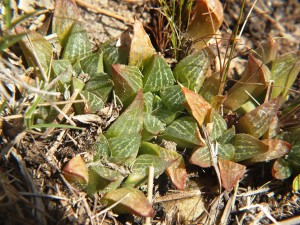 |
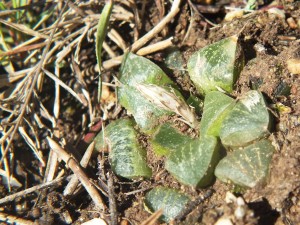 |
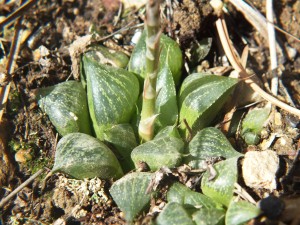 |
 |
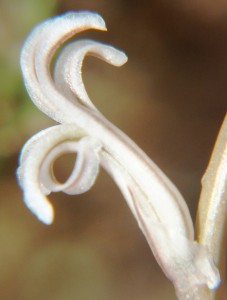 |
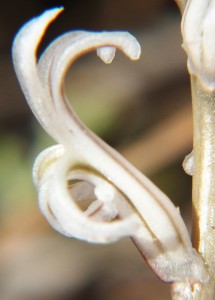 |
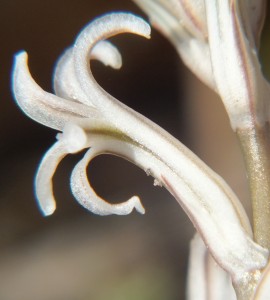 |
 |
 |
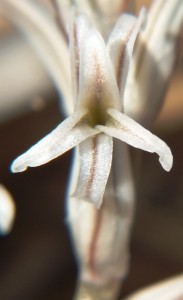 |
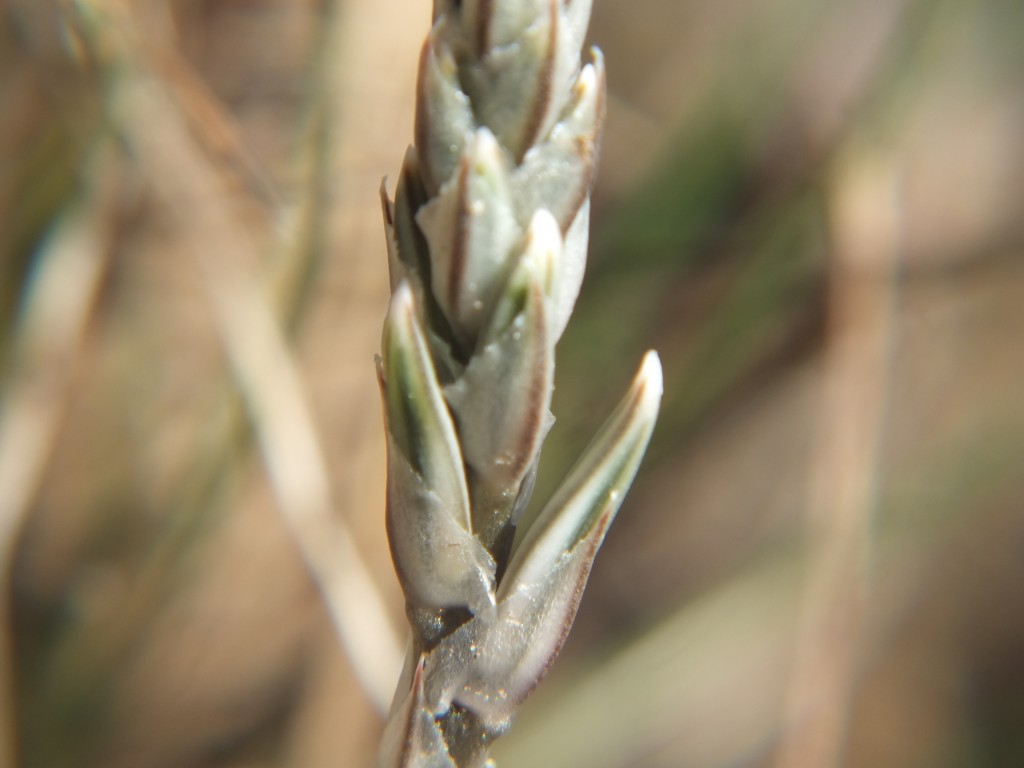 |
|
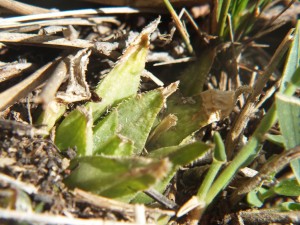 |
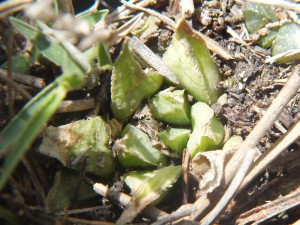 |
Set 9 MBB8006 H. floribunda, S Wegwysersrivier (figs 99-107).
The presence of this species is no surprise. It was quite abundant although slightly separated from where we found the H. retusa ‘turgida’. It depends on rocks for protection from trampling. This species of course generally flowers in late summer but once again here is a hybrid present with the other parent flowering a good 6 months later. This has been observed in several other places where these same two species occur in close association. [photo file names are mistakenly named MBB8005, they are in fact MBB8006 – ed.]
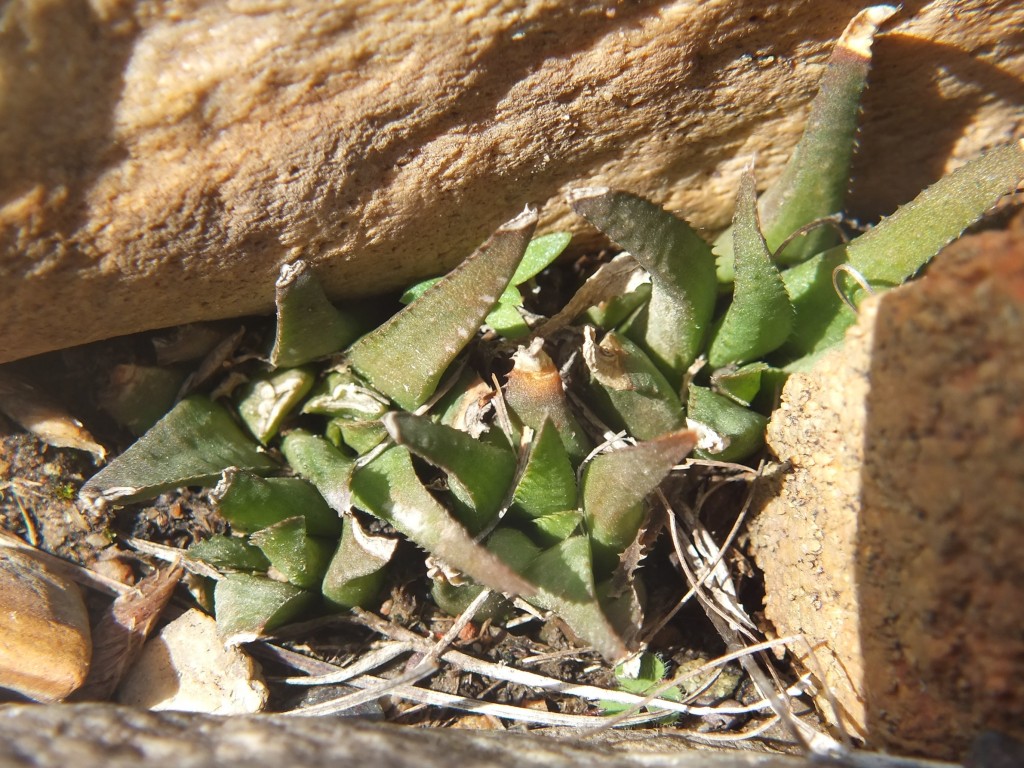 |
|
 |
 |
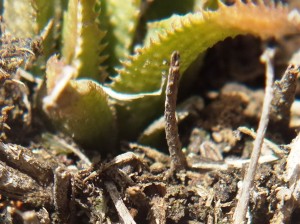 |
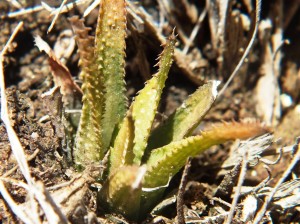 |
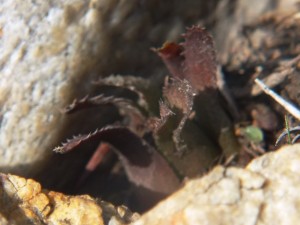 |
 |
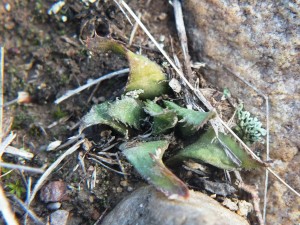 |
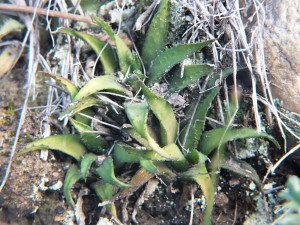 |
Conclusion:
The product of this exploration was based on prediction and I would wish that cognizance was taken of the fact that this could and can be done. Using an aggregate or group category and a host of Latin binomials is not botany and obfuscates things. Perhaps to the benefit of traders, but certainly confusing to the collector who make wish to know more about plants than simply having a label.
Acknowledgement:
I have already acknowledged the help of Wilhelm and Mandi Zietsman; and Gert and Lynette van Rensburg. We were now also assisted by Wessie Wessels, a retired airline pilot who owns the Bloekomsbos Farm. Kobus Venter came to see my pictures and I really value his interest and useful comment. I wish there was more similar interested and informed comment.
.



